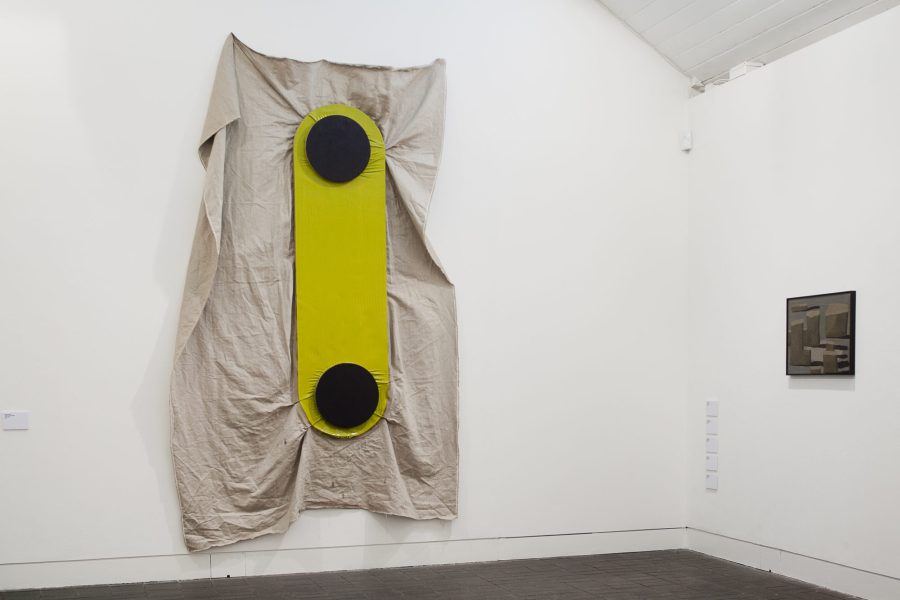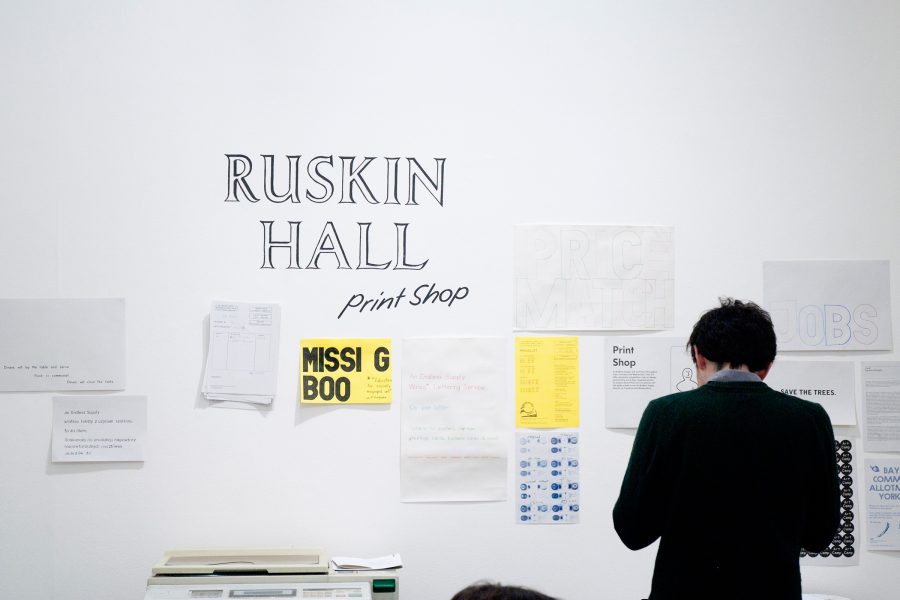For all the brash brilliance of her painting, Susan Sluglett is a person of great humility and humour. I met up with her for a cup of tea and the chance to pose a few questions.
Having graduated recently from her second degree, I began by asking Susan about the first time around. A born-and-bred Londoner, she was keen to leave the city after finishing school, and so embarked on a Graphics degree at Bath Academy of Art, which was then located in Corsham, Wiltshire. Finding herself left to her own devices, she spent three years focusing on drawing, gaining the mastery to go on to pursue a career in illustration. There were illustrious moments, not least being commissioned to do the cover design for Jeanette Winterson’s Oranges Are Not The Only Fruit, 1985, which won the author The Whitbread Award. But with the dawn of the digital age, Susan found herself feeling increasingly displaced and work dried up.
Life took her on a sartorial tangent and one maternity cover and a few promotions later, she awoke to find herself the Manager of a branch of Issey Miyake. Realising that this was definitely not the dream, she gave it all up, borrowed ‘an awful lot of money’, and threw herself back into her education, round two. This was 2004. Equipped with a newly-found feeling that ‘deep down I wanted to be a painter’, Susan took two-week courses at The Slade Summer School, which led to a Fine Art Foundation at Kensington and Chelsea College and then a BA in Fine Art Painting at Wimbledon College of Art. At each stage there were whispered words of encouragement from women in the know – notably, the print-maker Oona Grimes at the Slade and the artist and curator Erika Winstone at Kensington and Chelsea – and she is quick to acknowledge these debts of gratitude.
Yet I found myself interested in a certain single-mindedness, expressed, for example, in the clarity with which she describes herself as a ‘painter’ rather than an ‘artist’. For some, this distinction might be seen to suggest a traditional or apolitical person, but with Susan it reflects someone who is totally enamoured with their medium. There is something delicious about the very way that she pronounces the word ‘paint’ – with a plosive start and a relished middle. Objects (both found and acquired) have a place in her process and there are preliminary sketches too, but ultimately, ‘it really is all about the materiality of the paint’. There is an energy to its application, and a vigour to her compositions, and standing beside the latest paintings at Jerwood Space, which are 2m in width and 2.5m in height, you cannot help but be impressed by the physical exertion it must have taken (especially for a slight woman) to work on such a scale.
When Susan made her application for the Jerwood Painting Fellowships (which also had two rounds, as she initially applied in 2010) she proposed that she had the beginnings of ‘an arbitrary mythology’. The Royal Wedding, with all its panoply of power, had piqued the painter’s interest in ritual, in the idea of ‘mongrels and purebreds’, and in the savage portrayal of celebrity life. With an uneasy mix of intrigue, sympathy and satirical bite she sourced inspiration from You Tube videos of stag nights and other (web)sites of public humiliation that have an almost medieval undercurrent – like the stocks of a digital age. ‘I’m not looking for answers when I paint and I am not taking a stance… I just think this is really interesting material’.
I asked about the relationship with her mentor, Marcus Harvey. From the outset, she laughed, he recognised that there was a fundamental difference in their practices: while he liked to execute a painting having fleshed out his concept, Susan always used painting as a medium through which to think. Marcus was taken aback (to put it politely) to discover that she might make a painting in a day. He encouraged her to experiment at the beginning – and she played with unstretched canvas, a material that made her feel free because the tension was literally taken out of it. Over the course of the year, she found that their conversations shaped her style considerably, with her paintings taking a turn towards increasing figuration, with a greater investment in the narrative and more interest in creating a ‘finished object’ (even if several works arrived at the Jerwood Space still tacky).
There are more formal games too. Like the Georgian column that appears in several paintings in this series, which is in fact a plastic decoration designed for separating the tiers of a wedding cake. ‘It’s like shifting scenery’, Susan considers, ‘I like playing with the theatricality of the work’. Titles such as The Emerald City reinforce that her influences are cinematic too, ‘because so often films are about the core issues of human nature, power and relationships’. The Wizard of Oz feels like a particularly pertinent reference point and I left musing on how Susan, like Dorothy, had journeyed from black-and-white to glistening colour, observing a world of rich artifice, in an attempt to uncover what lies at the end of the yellow brick road…

